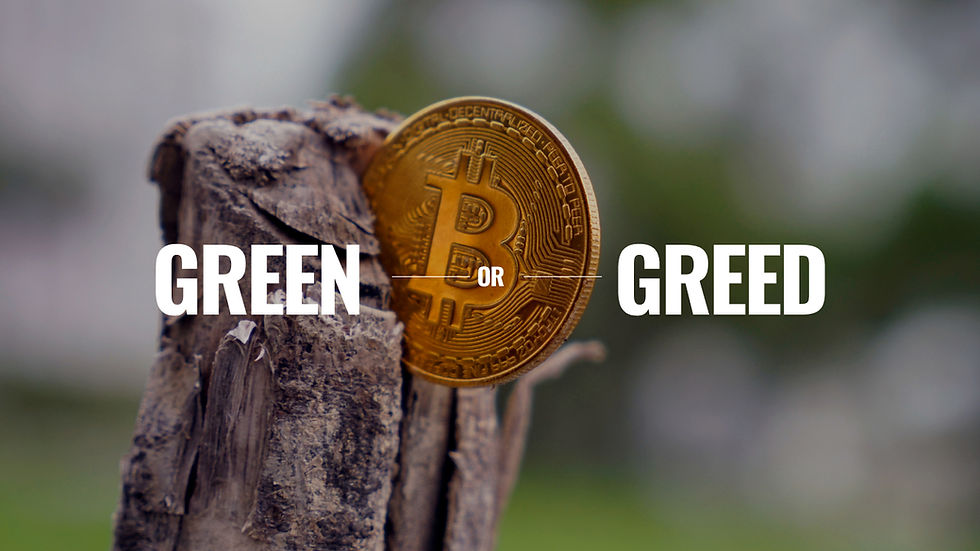In recent years, blockchain technology has emerged as a groundbreaking innovation, promising to transform industries ranging from finance to supply chain management. However, as the adoption of blockchain and cryptocurrencies like Bitcoin grows, so does concern over their environmental impact. This article delves into the ecological footprint of blockchain technology, examining the balance between its revolutionary potential and the environmental cost it incurs.

Understanding the Environmental Impact
The environmental concerns surrounding blockchain technology primarily stem from the energy-intensive nature of the consensus mechanisms used to validate transactions. The most commonly discussed mechanism, Proof of Work (PoW), requires significant computational power and, consequently, substantial electricity consumption.
The Energy Consumption of Proof of Work
PoW, the consensus mechanism underpinning Bitcoin and several other cryptocurrencies, involves solving complex mathematical puzzles to validate transactions and secure the network. This process, known as mining, requires an enormous amount of computational power, which in turn demands a significant energy supply. The global energy consumption of Bitcoin mining has been compared to that of entire countries, raising concerns about its sustainability and environmental impact.
Carbon Footprint
The carbon footprint of blockchain technology is closely tied to the source of its energy consumption. In regions where electricity is predominantly generated from fossil fuels, the carbon emissions associated with blockchain mining are particularly high. This has led to criticism that the technology could be exacerbating global warming and undermining efforts to combat climate change.
The Debate: Green or Greed?
The debate over blockchain's environmental impact often centers on the trade-off between the blockchain technology's potential benefits and its ecological costs. Proponents argue that blockchain can drive significant advancements, including increased financial inclusion, enhanced security, and more efficient supply chains. Critics, however, question whether these benefits justify the substantial energy consumption and associated environmental degradation.
Innovations Towards Sustainability
In response to growing environmental concerns, the blockchain community has begun exploring more sustainable practices and technologies.
Alternative Consensus Mechanisms: Innovations like Proof of Stake (PoS), which significantly reduces energy consumption compared to PoW, are gaining traction. PoS and other mechanisms such as Proof of Authority (PoA) and Delegated Proof of Stake (DPoS) offer more energy-efficient methods for validating transactions.
Renewable Energy Sources: Some blockchain operations are transitioning to renewable energy sources to power their mining activities. By utilizing solar, wind, or hydroelectric power, these initiatives aim to mitigate the carbon footprint of blockchain technology.
Energy-Efficient Blockchains: New blockchain platforms are being designed with energy efficiency in mind, aiming to provide the benefits of decentralized technology without the hefty environmental cost.
Navigating the Future: Towards a Sustainable Blockchain
The journey towards a sustainable blockchain ecosystem is complex and multifaceted. It requires concerted efforts from developers, miners, investors, and policymakers to prioritize and implement environmentally friendly practices. This includes investing in renewable energy, adopting energy-efficient consensus mechanisms, and encouraging the development of green blockchain projects.
The Role of Regulation and Incentives
Government policies and regulations can play a crucial role in steering the blockchain industry towards sustainability. Implementing standards for energy consumption, offering incentives for using renewable energy, and supporting research into sustainable blockchain technologies are critical steps in this direction.
Conclusion: Balancing Innovation and Responsibility
As blockchain technology continues to evolve, its environmental impact remains a pivotal concern. The challenge lies in balancing the undeniable potential of blockchain to revolutionize various sectors with the imperative to protect our planet for future generations. By fostering innovation towards sustainability, the blockchain community can ensure that its revolutionary technology paves the way for a greener, more inclusive, and efficient future, rather than contributing to environmental degradation.
FAQs: Understanding Blockchain's Environmental Impact
1. Why is blockchain so energy-intensive?
Blockchain technology, especially the Proof of Work consensus mechanism, requires significant computational power to validate transactions and secure the network, leading to high energy consumption.
2. Can blockchain be environmentally friendly?
Yes, through the adoption of more energy-efficient consensus mechanisms like Proof of Stake, the use of renewable energy sources, and the development of energy-efficient blockchain platforms, blockchain can become more environmentally friendly.
3. What are the benefits of blockchain that could justify its energy use?
Blockchain offers numerous benefits, including enhanced security, transparency, reduced transaction costs, increased financial inclusion, and the potential to streamline and secure transactions across a myriad of industries.
4. How can I contribute to a sustainable blockchain ecosystem?
Individuals can contribute by supporting and investing in sustainable blockchain projects, advocating for the use of renewable energy in blockchain operations, and encouraging the adoption of energy-efficient consensus mechanisms.

Comments